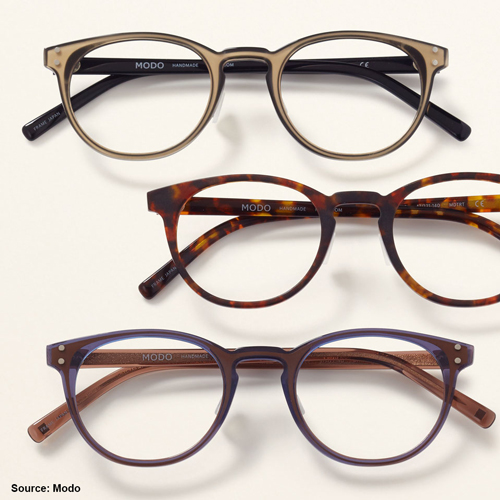I have to admit, for a large chunk of my opticianry career, I did not devote enough attention to how ophthalmic eyeglass frames are designed, produced, their material make-up, or the company behind the product. My husband is an engineer by profession, and the way he would hold a frame and examine the hinges, the mechanics, the design, sparked an interest in me. To learn more, I took the CE Why You Should Know How Frames Are Made, where I discovered the complexity and artistry involved in making quality frames.
 Never again will I take a frame for granted. Now when I pick up a frame I’ll appreciate its construction and understand how it got from an idea, to a design sketched on paper, to the patient’s face. When presenting frames, how often do you consider all that goes into making this marvel that is held on by two ears and one nose and affords the wearer the precious gift of sight? Do you know the story of the company that made it?
Never again will I take a frame for granted. Now when I pick up a frame I’ll appreciate its construction and understand how it got from an idea, to a design sketched on paper, to the patient’s face. When presenting frames, how often do you consider all that goes into making this marvel that is held on by two ears and one nose and affords the wearer the precious gift of sight? Do you know the story of the company that made it?Materials and material combinations are continually being developed and improved upon. Some manufacturers have proprietary materials with unique features and benefits. Consider MODO’s Metal Core Acetate frames. We know that most temples have a metal core, but MODO uses a unique process to add a metal core to the frame front as well. A depression is milled into a highly polished acetate block, and the metal core is inserted. A cover plate of the same acetate is placed on top, encapsulating the metal core, and the blocks are laminated together. In this special manufacturing technology, the final form is the visible combination of beautifully colored acetate and a delicate metal core.
Frame manufacturers design with a purpose. While each company’s purpose may be different, successful companies understand that they are world citizens and, therefore, need to have a positive impact on people. Consider the philosophy and purpose of MODO. Their philosophy is, “we are driven by a passion for finding the optimal balance of form and function. Inspired by the precision of architecture, we work with lightness and strength, structure and fluidity. By merging innovative materials, new technologies and purist designs, we offer you unparalleled lightness and lasting quality.” Then, their purpose: “In 2016, we launched the Buy a Frame – Help a Child See program in collaboration with SEVA Foundation. Today we have helped more than 650,000 children in India to see by offering free vision screenings, prescription glasses and corrective treatments. We are proud to be an eyewear industry leader in social responsibility.”
MODO’s ECO line is a great example of design for form and function with the purpose of sustainability and social responsibility. ECO bio based frames are made with 63% castor seeds – making them sustainable while lightweight and comfortable. ECO also has a recycled collection made with 95% recycled materials, making them sustainable, lightweight and comfortable, too. Adding social responsibility to sustainability, ECO plants a tree in a rural community for each frame sold. The trees help improve soil, and result in better crop yields for farmers. A real win-win!
Designing and producing ophthalmic frames is a complex and time consuming endeavor. Consider what goes into making a MODO frame. The final quality product begins with the best materials and state of the art precision manufacturing technology. There are fifty steps in the process from the design concept through the finished product, and it is hardly all done with automation!
An artist creates the design and chooses the material, colors and textures for the frame. Parts of the frames are milled and sculpted separately through automation, but with human direction and quality control inspection at every step. The final processes of polishing, assembly and adjustment are all done by hand to ensure compliance with MODO’s high quality standards and the technical requirements for ophthalmic frames. People are the biggest part of creating eyewear for people.
When customers ask why frames cost so much, it indicates that they think machines merely stamp out frames from chunks of plastic or blocks of metal. It’s up to us to educate them about the value of the labor intensive, precision process that results in a stylish, comfortable, durable product like a MODO frame. Learn more about the process of frame manufacturing and earn a free ABO credit. Through an educational grant from MODO, 20/20 offers a free CE article entitled Why You Should Know How Frames Are Made. Available on 2020mag.com/ce, this course details the process from design idea, to computer aided modeling, through the manufacturing process, to beautifully finished frames.












